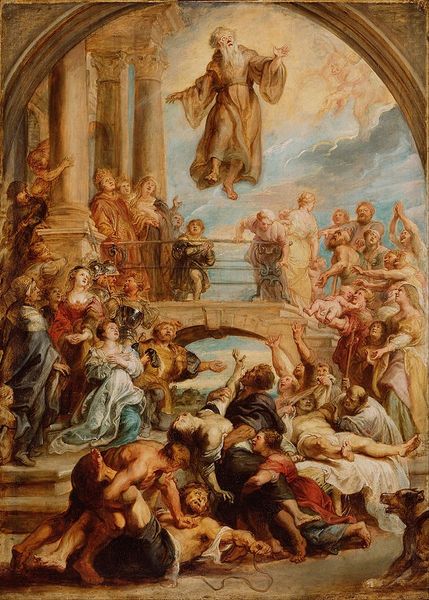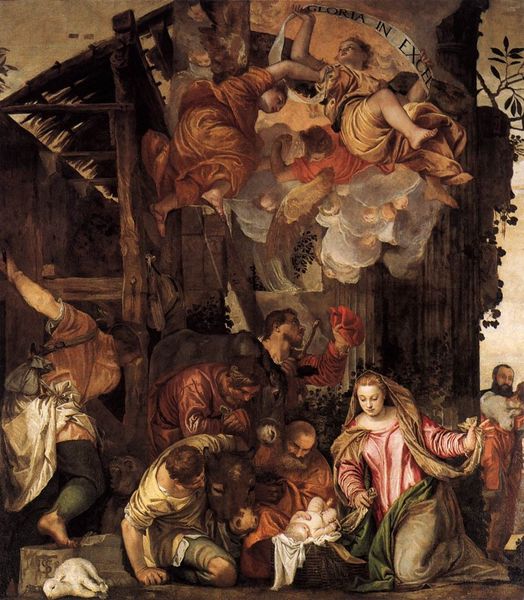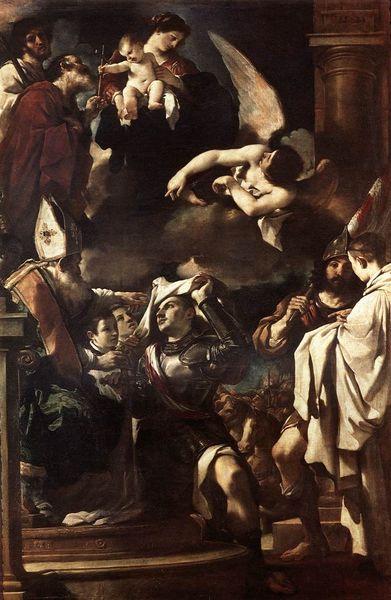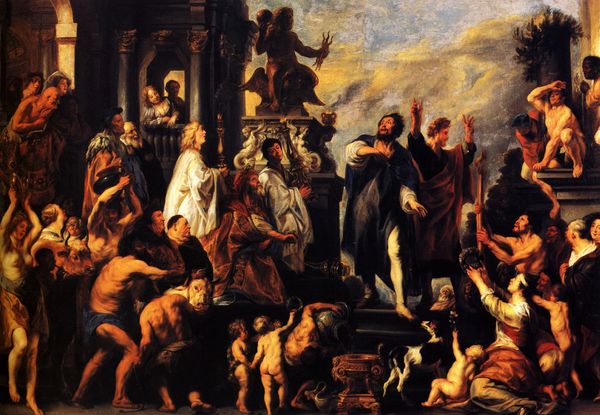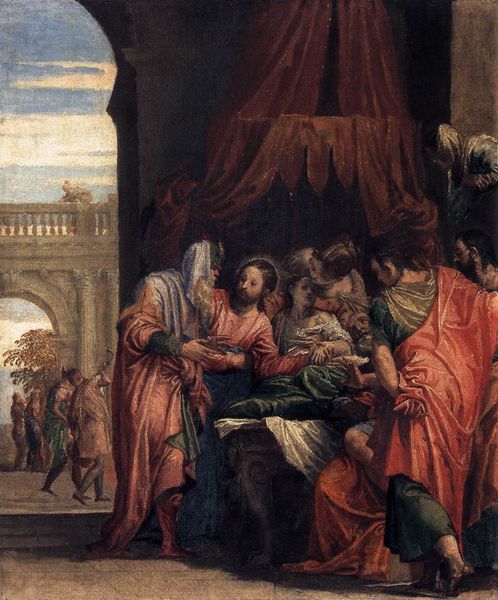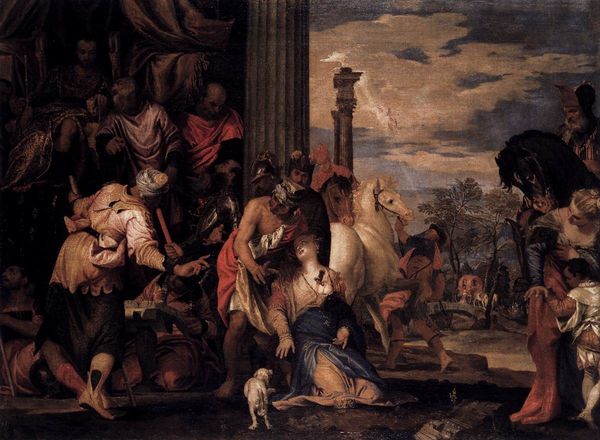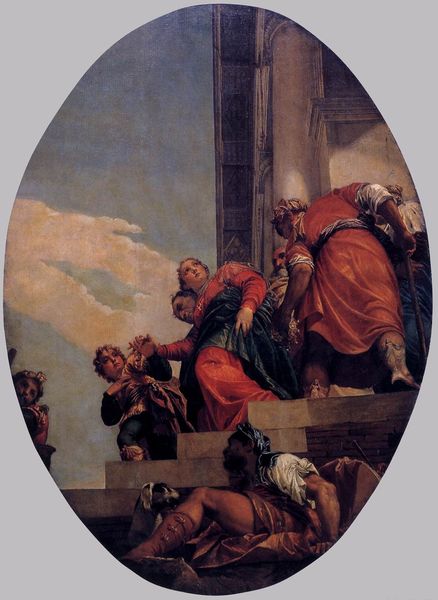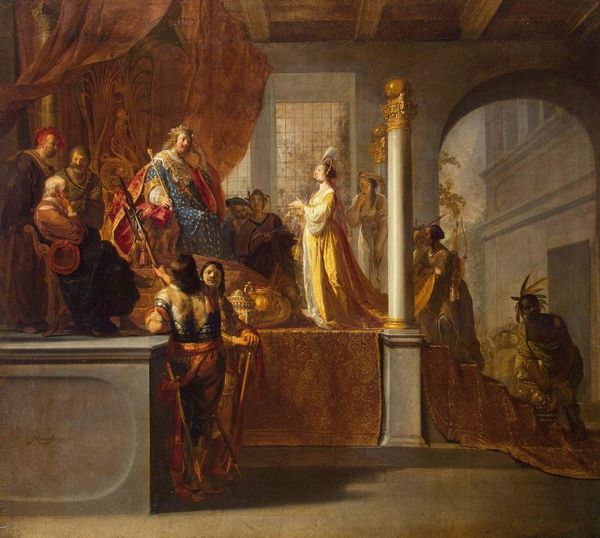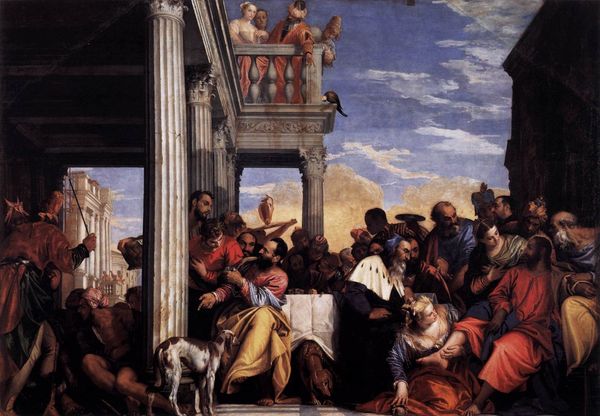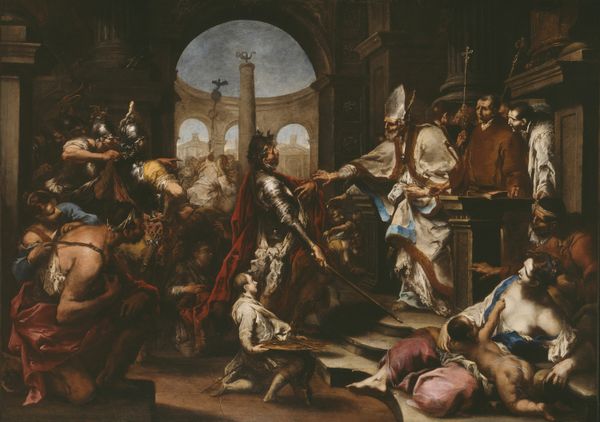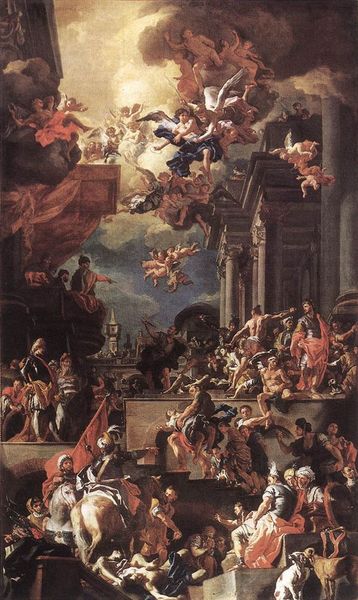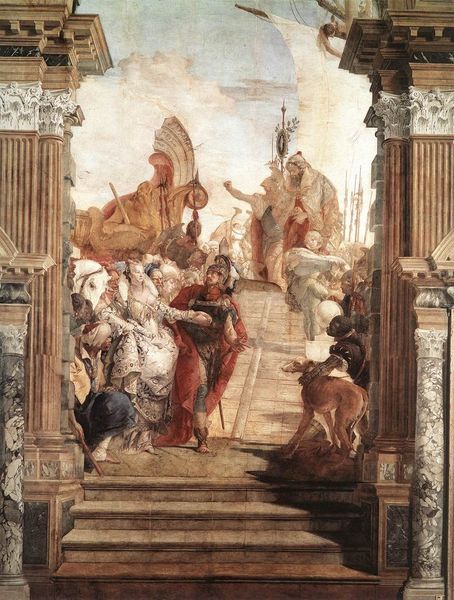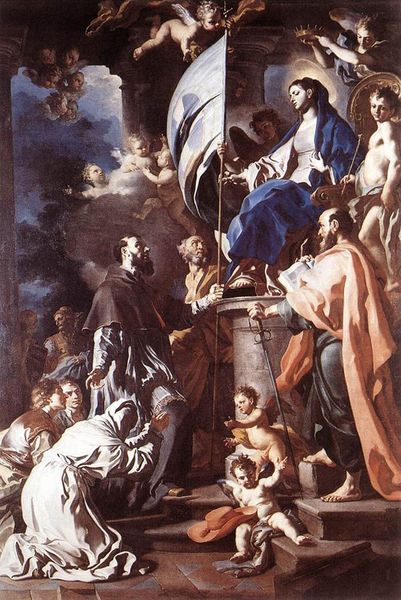
painting, oil-paint
#
venetian-painting
#
allegory
#
narrative-art
#
painting
#
oil-paint
#
perspective
#
mannerism
#
figuration
#
oil painting
#
chiaroscuro
#
christianity
#
history-painting
#
italian-renaissance
#
realism
#
christ
Dimensions: 355 x 320 cm
Copyright: Public domain
Curator: This is Paolo Veronese’s *Adoration of the Magi*, painted in 1573. It’s an oil on canvas and currently hangs in the National Gallery in London. Editor: My first impression is just how much is happening here! A real profusion of textures, figures, and...what exactly is that structure in the background? It looks more like a building under construction than a humble stable. Curator: Indeed. Note how Veronese sets the scene among classical ruins—an explicit symbol merging the classical world with the advent of Christianity. And those figures working on the building, actively building, they also embody the themes of labour and social context. Editor: The materials of the canvas are interesting in themselves, aren't they? It makes you think about the conditions and production process. Curator: Consider, too, the iconography of the Magi themselves. They’re not merely offering gifts, but enacting a ritual of supplication. This gesture becomes a potent symbol of recognition of divine authority, linking back to early Christian visual theology. Editor: That bold colour too, it wasn't cheap back then, was it? The use of blues, especially ultramarine derived from lapis lazuli, would have added considerably to the cost and highlights the status of the patron who commissioned the work. Curator: Exactly. Colour as a social signifier—and then we can see the dramatic contrast between the earth-toned robes of some of the figures with the jewel-toned fabrics worn by the magi themselves—clearly signifying social hierarchy, and almost symbolic of their inner enlightenment. Editor: It's also quite strategic in leading your eye across the whole tableau, almost choreographing the composition. Speaking of which, that strong diagonal light pouring down, feels almost… theatrical. It dramatically shapes our interpretation of events. Curator: Yes! It recalls the divine made material, light as the visible grace of God, an old but enduring symbol made new again with Mannerist flourish. Editor: Looking closer at the making, the labour of producing a painting on this scale in this historical moment. A thought about who exactly had access to pigments, to brushes, and who was kept separate from the means of production… fascinating, actually. Curator: A beautiful way to reframe it and reflect how paintings aren’t simply aesthetic objects but records of labor and materials—embedded with complex histories.
Comments
No comments
Be the first to comment and join the conversation on the ultimate creative platform.
